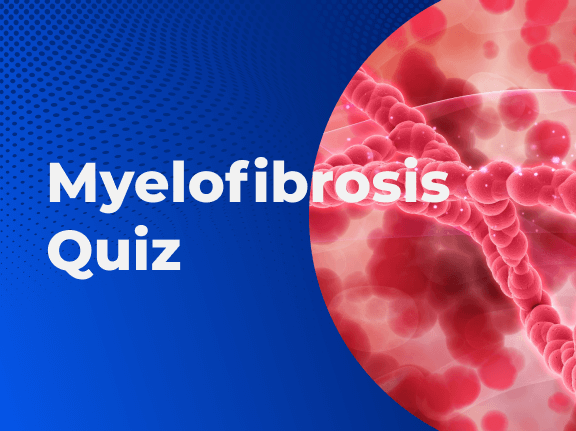
Myelofibrosis (Bone Marrow Cancer) Quiz
This online assessment takes only 2 minutes. It will help you find the right clinical trials for you.

Samantha Kingsbery
We ask this to determine which clinical trials you may be eligible for.
If you need to contact us right away?
Call +1 844 627 7246Your personal data is fully confidential and 100% secure
In the Myelofibrosis quiz, you will be introduced to the diseases’ origin, classification, and the signs & symptoms patients experience. Myelofibrosis is a rare form of bone marrow cancer that effects the production of blood cells that is caused by mutations in bone marrow stem cell DNA. Researchers today are still trying to determine why these mutations occur. The mutated blood cells continue to produce until they influence the production of red blood cells, platelets, and white blood cells. There are less than 20,000 patients in the United States with Myelofibrosis.
When myelofibrosis occurs by itself, it’s known as main myelofibrosis. If it happens as the result of a separate disease, it is called secondary myelofibrosis (e.g. scar tissue in the bone marrow as a complication of an autoimmune illness).
Myelofibrosis in most patients is a very slow growing disease and does not cause symptoms in its early stages. However, if left untreated, some people eventually can develop Acute Myelogenous Leukemia, an aggressive form of leukemia.
Myelodysplastic Syndrome and Myelofibrosis
How is Myelofibrosis treated?
Some patients might not require treatment right away. These patients will receive active surveillance until further notice. For other patients, doctors will determine if the patient’s case is aggressive or intermediate risk. For aggressive cases, treatments such as bone marrow transplants are performed.
During this remedy, you’re given healthy stem cells from a donor to replace your defective ones. Chemotherapy or radiation therapy is initially given to these patients to destroy the diseased bone marrow. Then, stem cells from the donor are given to the patient through an infusion.
For patients with intermediate risk, palliative care is provided to help manage the symptoms and side effects of Myelofibrosis. For example, if red cells are depleted and anemia occurs, blood transfusions or medications are given such as Androgen or Thalidomide.
Clinical researchers are studying new drugs to treat myelofibrosis and improve current treatment methods. Clinical trials can be beneficial for many patients and there are roughly 100 trials available for myelofibrosis patients to enroll in and receive brand new treatment options.
Almost Done!
Please complete the required fields and we will send results to your email.
You have completed the quiz.
0 out 0 answers are correct

We ask this to determine which clinical trials you may be eligible for.
Samantha Kingsbery Massive Bio Clinical NurseIf you need to contact us right away?
Call +1 844 627 7246Your personal data is fully confidential and 100% secure







